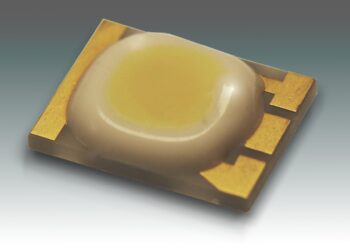The printed electronics sector is undergoing a transformative phase, and at its core is the groundbreaking introduction of inkjet-printed RFID tags—a symbol of precision and efficiency that goes beyond conventional applications. These tags are not just reshaping logistics and inventory management; they’re fundamentally altering how we engage with technology across a spectrum of industries.
The global printed electronics market, valued at USD 9.9 billion in 2021, is on track for substantial growth, projected to reach USD 23.0 billion by 2026. This surge, driven by an 18.3% Compound Annual Growth Rate (CAGR) from 2023 to 2028, underscores the industry’s adaptability and the transformative potential of emerging technologies.
Central to this evolution is the advancement of electrically functional inks, primarily carbon-based. These inks are orchestrating the creation of active and passive devices, such as thin film transistors and capacitors. Beyond being components, they serve as enablers, expanding the scope of printed electronics into flexible displays, antennas, sensors, and the realm of active wearables.
In 2021, the global printed electronics market reached a size of USD 8.66 billion, setting the stage for an anticipated compound annual growth rate of 22.3% over the forecast period. Despite these positive trajectories, challenges persist, necessitating ongoing innovation to achieve higher resolution and smaller structures.
Insights from market surveys add granularity to the strategic landscape. MarketsandMarkets’ survey foresees significant growth in the inks material segment, underscoring the critical role of materials in shaping the industry’s trajectory. Concurrently, Grand View Research’s survey highlights the rapid adoption of printed electronics, particularly in dynamic application areas like the Internet of Things (IoT) and consumer electronics.
Moving beyond statistics, the real-world impact of printed electronics is evident in practical applications. RFID systems, driven by printed electronics, redefine contactless identification in trade and transport. Furthermore, specific examples illustrate how these innovations are seamlessly integrating into various industries:
In healthcare, RFID tags are serving as smart labels for medication, ensuring precise inventory management and pharmaceutical supply chain tracking. This application is anticipated to be a significant contributor to the expected 22.3% CAGR over the forecast period.
The retail sector is witnessing enhanced efficiency through clothing tags equipped with RFID tags. This implementation reduces losses and improves supply chain precision, contributing to the overall market growth.
Agriculture benefits from RFID tags facilitating smart tracking of livestock. This application optimizes herd management and ensures the welfare of animals, becoming a key driver in the industry’s exponential growth.
Hospitality experiences a transformation with RFID tags embedded in wristbands or cards. This technology redefines the guest experience by offering contactless access, cashless transactions, and personalized services, aligning with the industry’s move toward dynamic applications.
Manufacturing and aerospace industries streamline their processes with RFID tags, facilitating efficient assembly and maintenance procedures. The manufacturing sector’s reliance on printed electronics is expected to fuel further growth.
In educational institutions, student IDs embedded with RFID tags enhance security and automate attendance tracking. This adoption exemplifies the diverse applications of printed electronics in the education sector.
Automotive manufacturing benefits from RFID tags that facilitate efficient vehicle tracking, contributing to improved quality control and production efficiency. This integration is anticipated to drive the industry’s growth.
Waste management embraces sustainability with RFID tags on bins, optimizing recycling efforts and waste collection routes. The waste management sector’s adoption of printed electronics aligns with global initiatives for sustainable solutions.
Smart packaging enhances consumer engagement with RFID tags, enabling interaction with products. The consumer goods sector’s incorporation of printed electronics plays a pivotal role in the market’s upward trajectory.
In the energy sector, RFID tags are essential for tracking equipment and components in power plants, ensuring timely maintenance and operational efficiency. The energy sector’s reliance on printed electronics is expected to contribute significantly to the industry’s robust growth.
As inkjet-printed RFID tags find solid ground in diverse practical applications, the industry is not merely evolving; it’s becoming an integral part of daily life. This marks the inception of a future where technology seamlessly intertwines with our existence. The narrative of printed electronics, epitomized by these precision-printed tags, is not just a story of innovation; it’s a paradigm shift, a reimagining of how we perceive and integrate electronics into the fabric of our lives.








